In September, Space 776 in Bushwick hosted my most recent solo outing, Collectors.
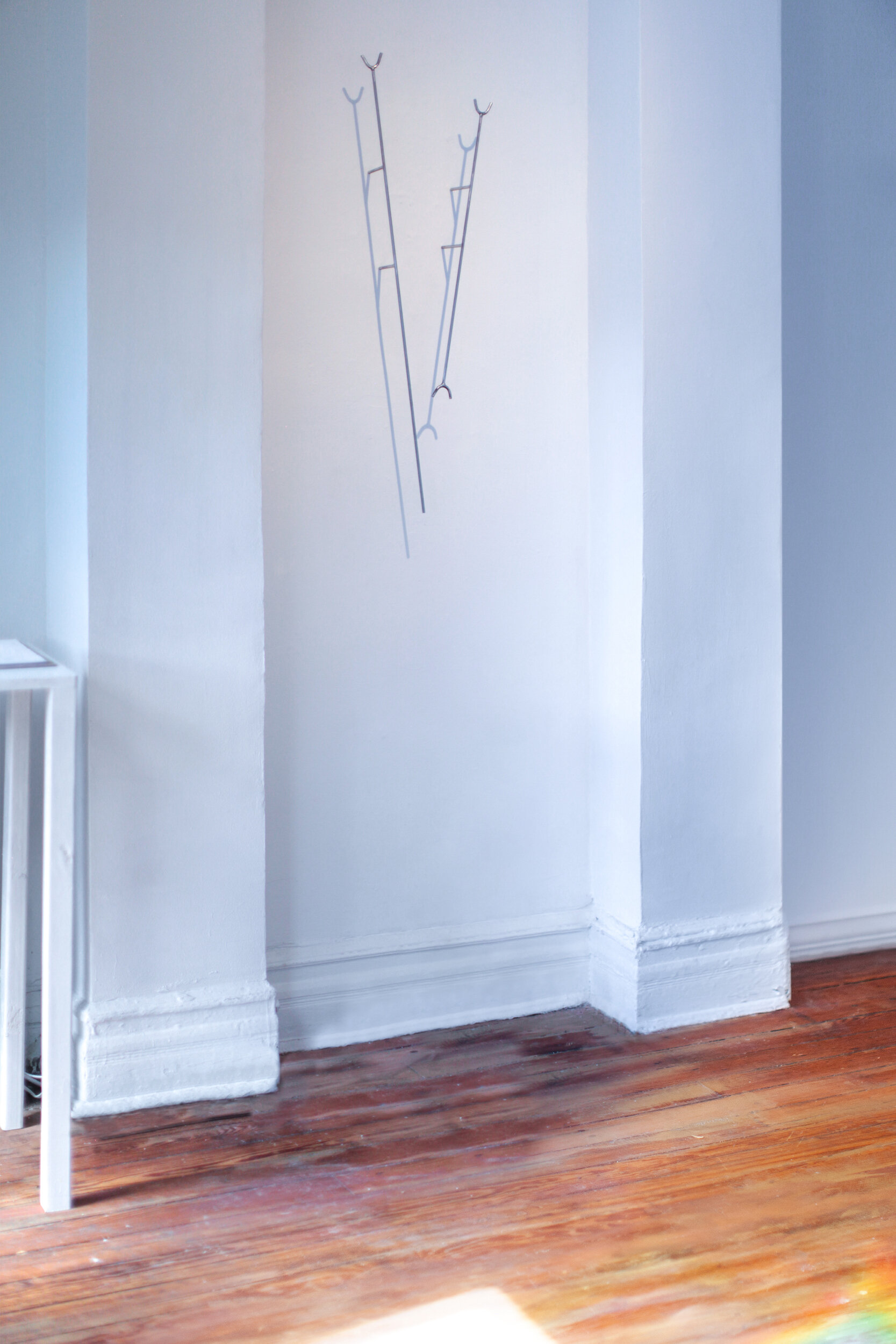
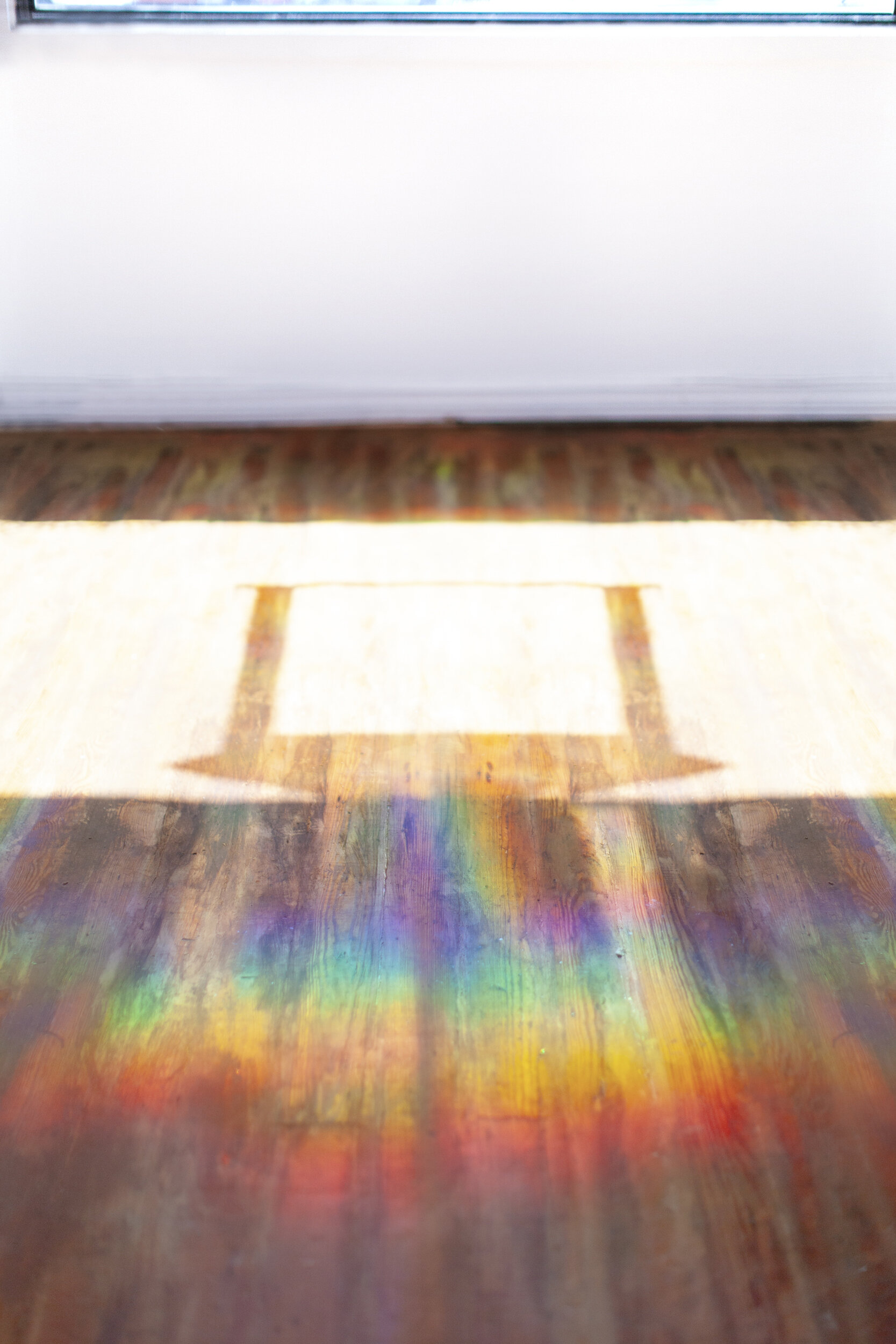
In terms of process, I’m most inspired by space. When I encounter a new space where I will be exhibiting my work, my mind is immediately flooded with visions. The possibilities of a space can become the basis for a whole new body of work. Space 776, with its unique architectural details and rich natural lighting, was an exciting canvas to work with.
The central idea that I was exploring in Collectors was how we take the chaotic mass of information that surrounds us every day and turn it into comprehensible information and ideas.
The first image that entered into my thoughts came together into a piece that ended up being what I considered to be a skeleton key to the show, Phase Realia via Memory Tiles. Phase Realia captured the most facets of this theme. In its structure, it included a sort of lens and an object evocative of an antenna —devices for receiving and transferring information. A small vitrine displayed the strange, half-formed output of these unorthodox data collectors.
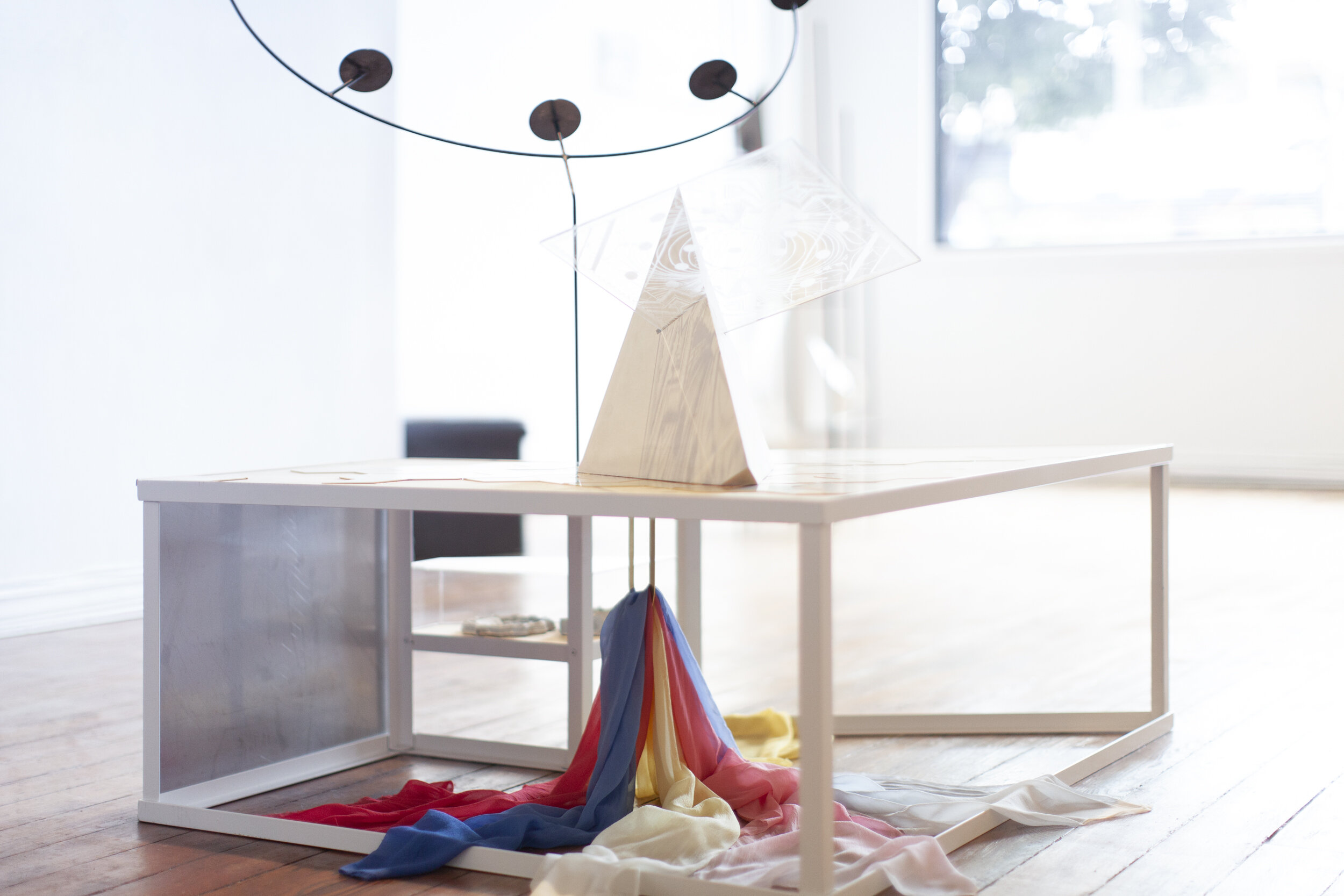
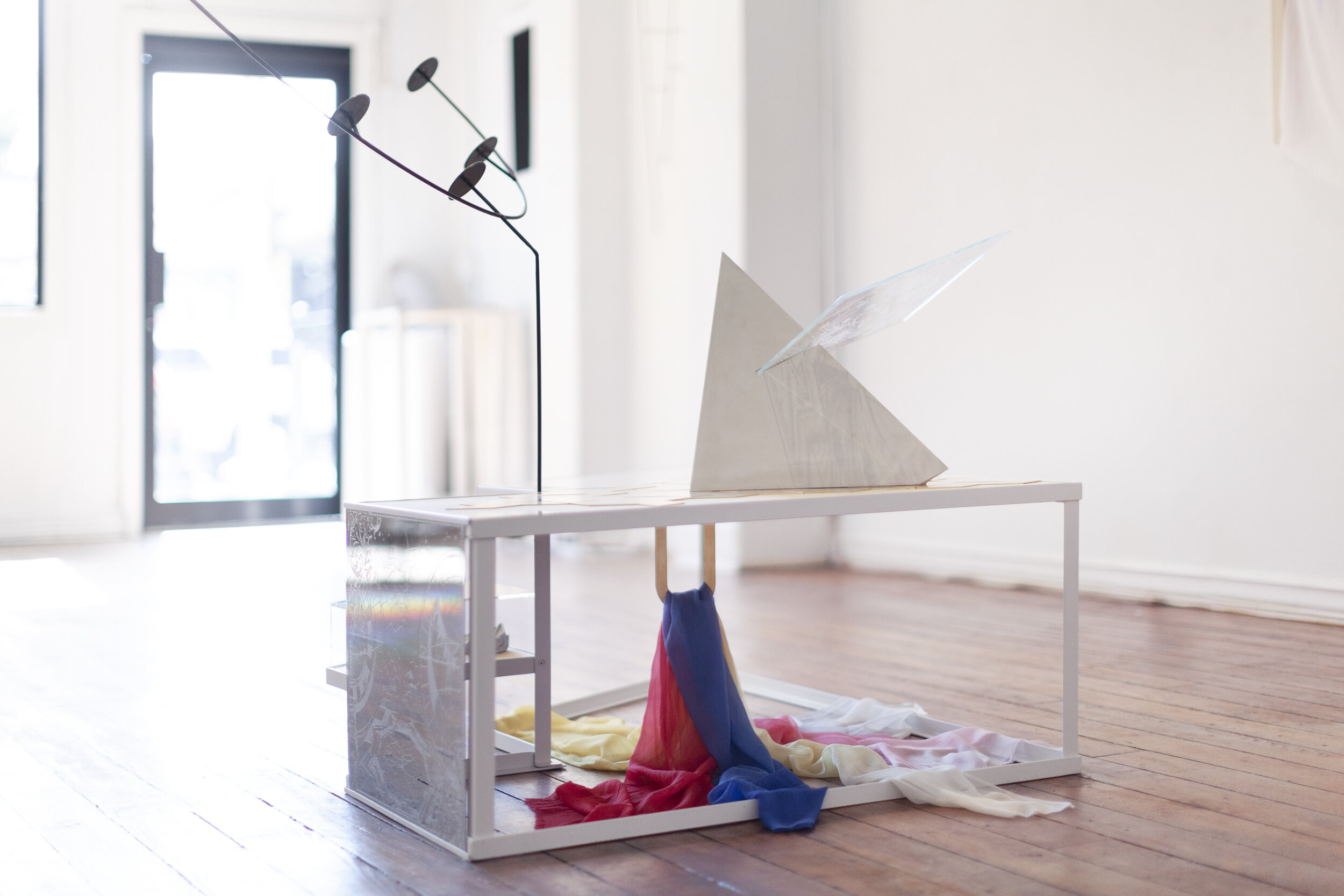
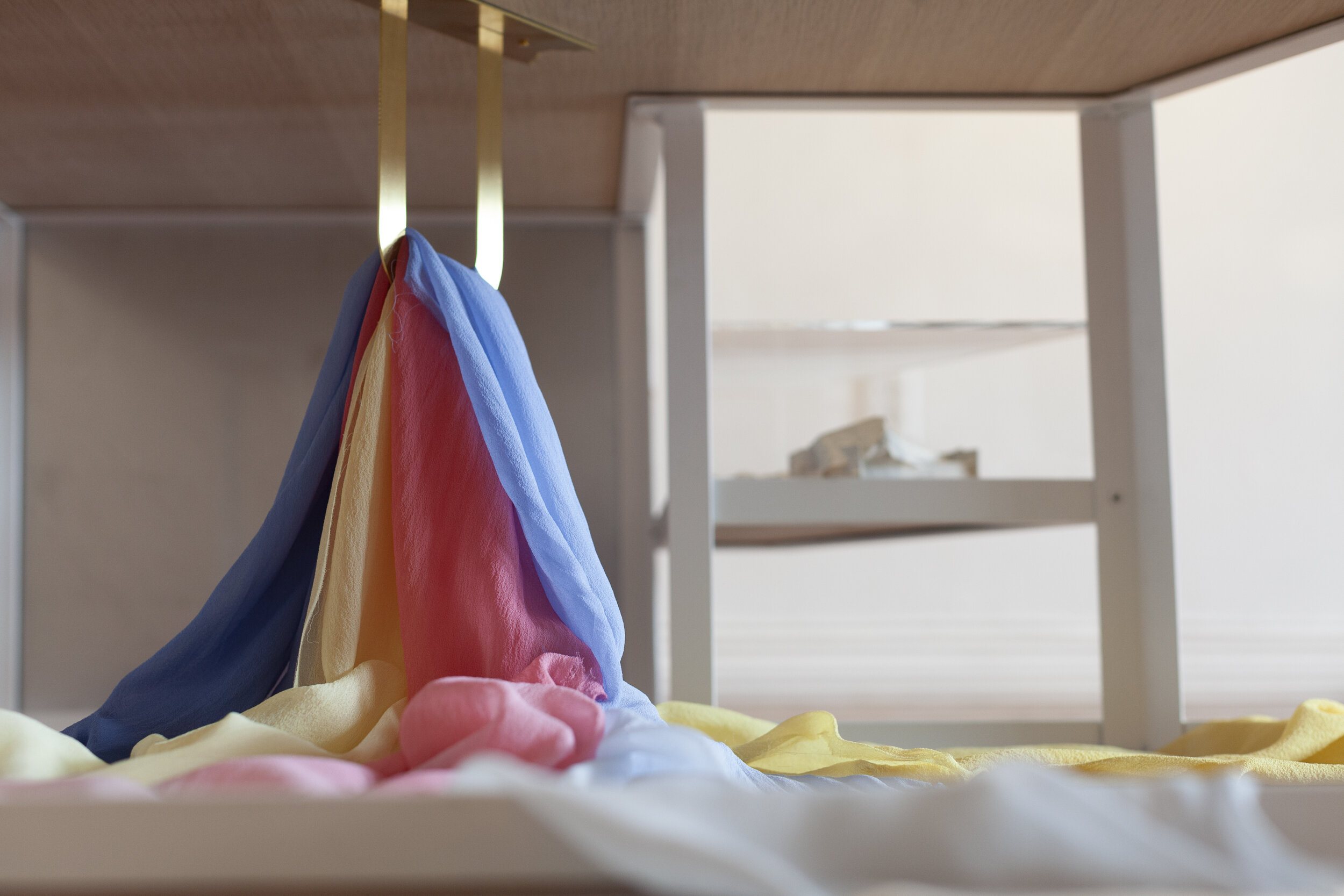
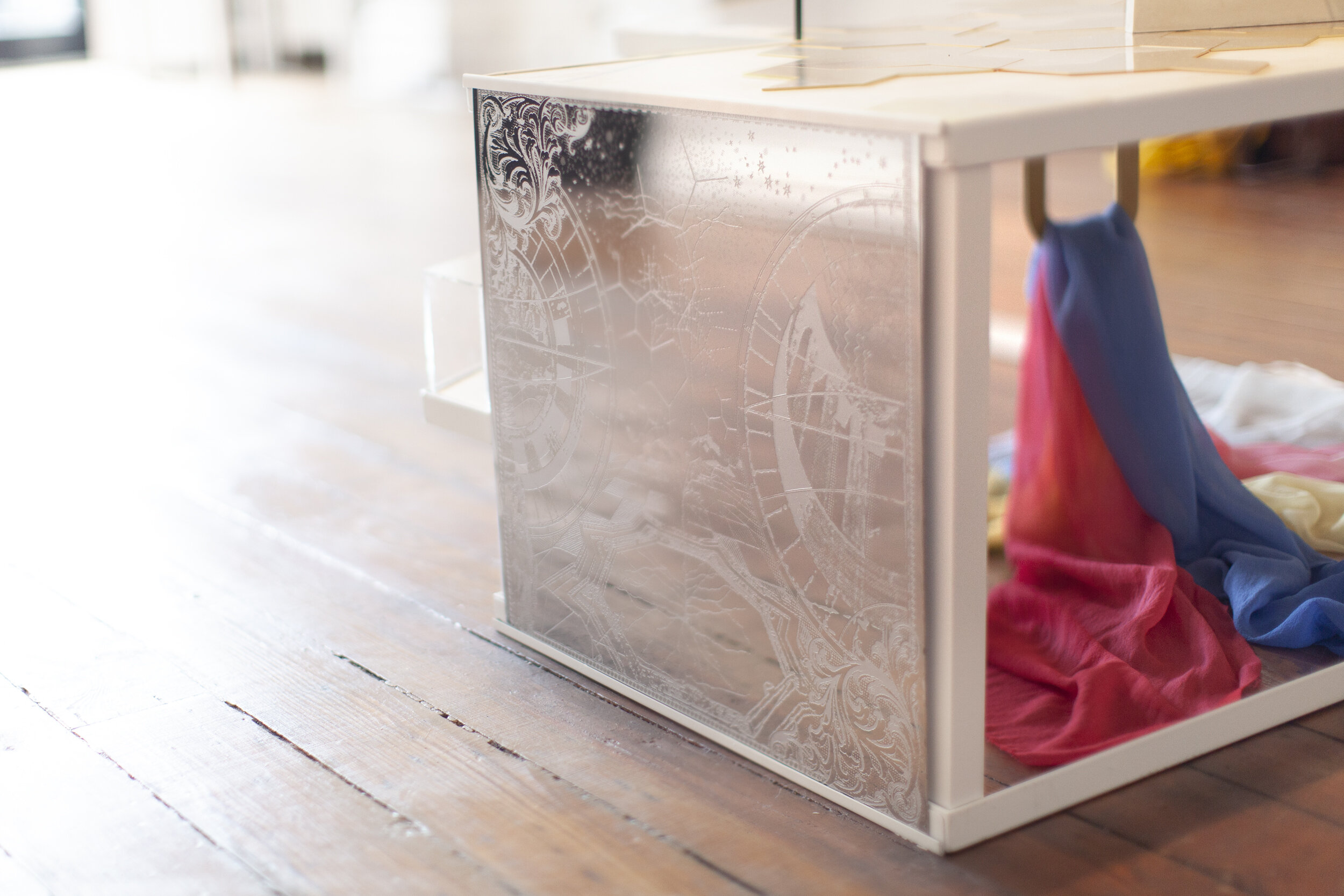
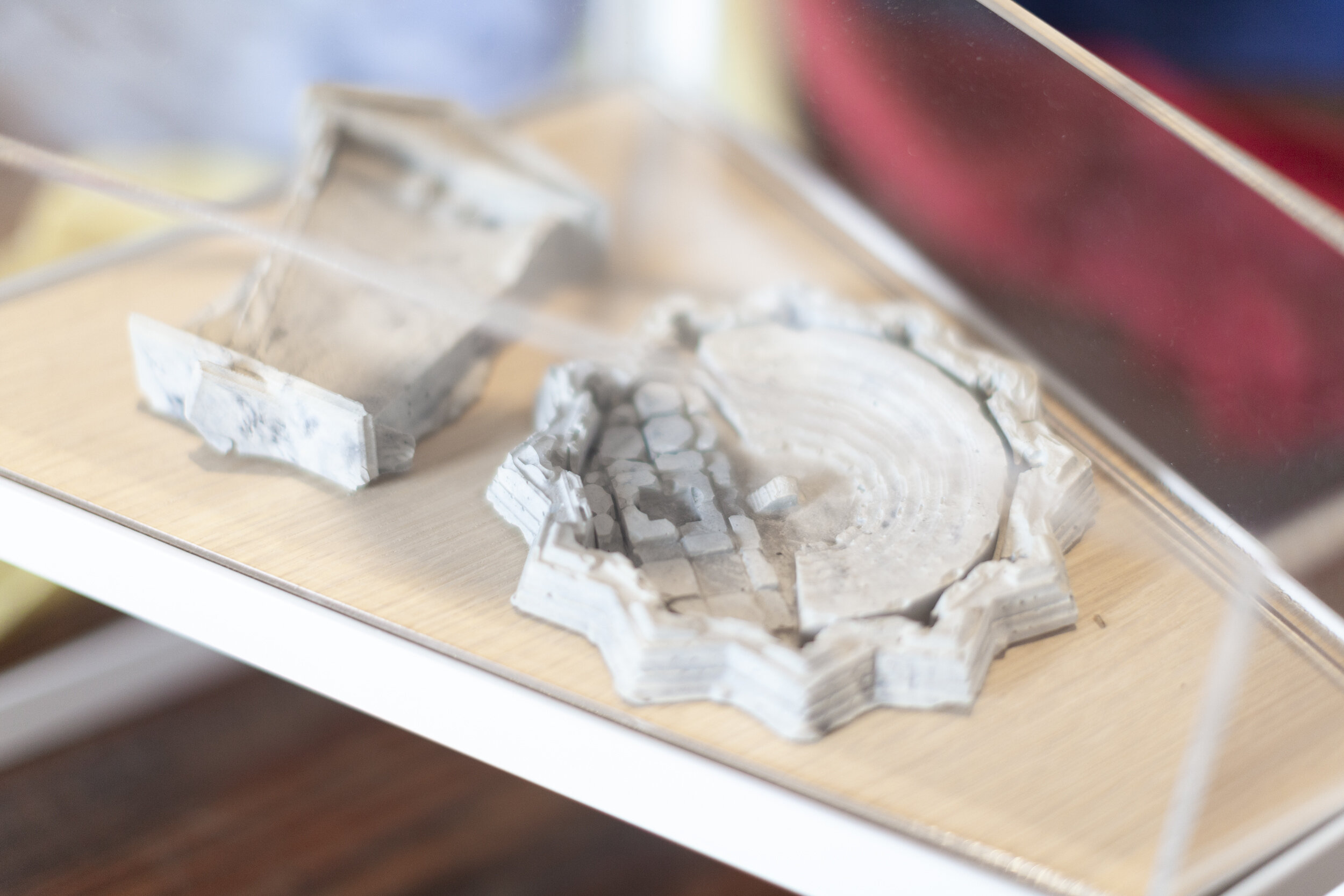
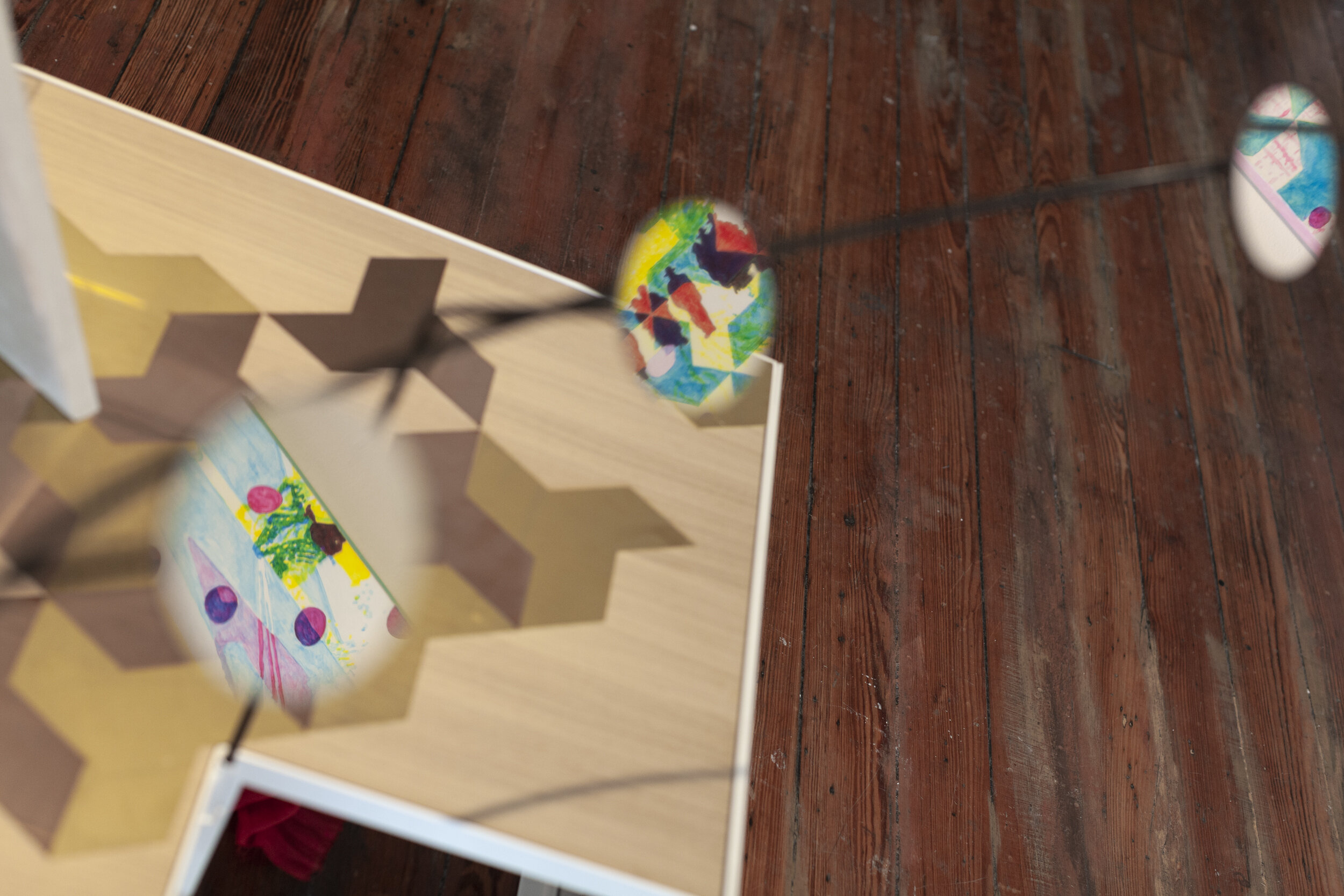
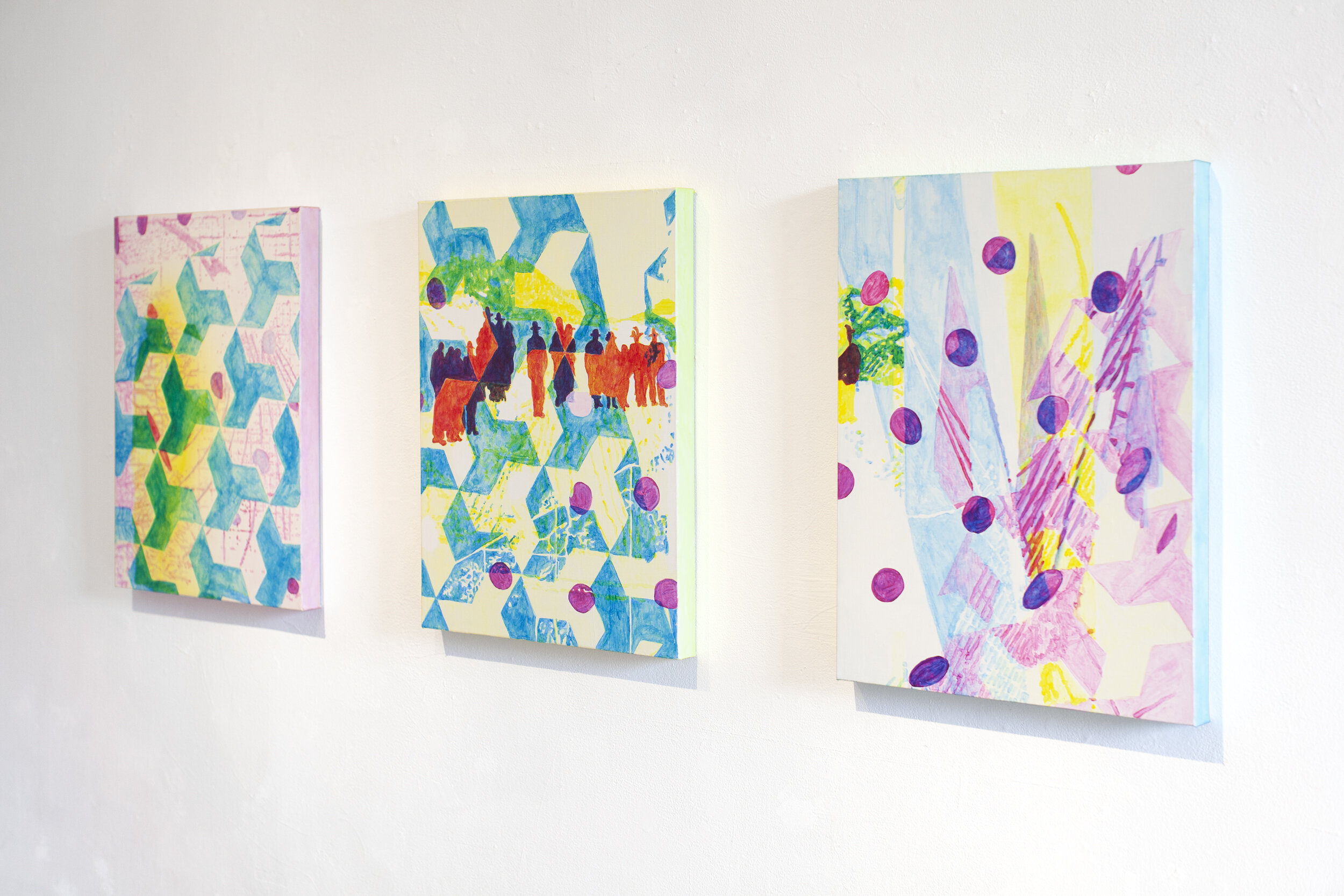


Other pieces were conceived less as “instruments” in their own right and more as artifacts of an imagined conversion of raw data into discrete concepts. For these pieces, I borrowed visual devices from map projections and tessellations, both of which I was looking at both as formal languages as well as instrumental methods of imposing form upon otherwise amorphous bodies of information.
Most important for my own recent research as I move forward is what I have been referring to as “the authority of objects”. From a big-picture perspective, this can refer to the way permanent or long-lasting structures of great scale can predetermine our behavior — infrastructure, architecture, urban planning, and so on. On a more microcosmic level (which I believe may be more consequential), I was looking at how our objects become an externalization of our consciousness. How do the objects we surround ourselves with become a sort of hard drive for our psyches, not only a record of possession and ownership, but, perhaps more importantly, also extensions (or hindrances) of our agency? How much of possibility or potential is predetermined or foreclosed by the objecthood of the things that surround us?
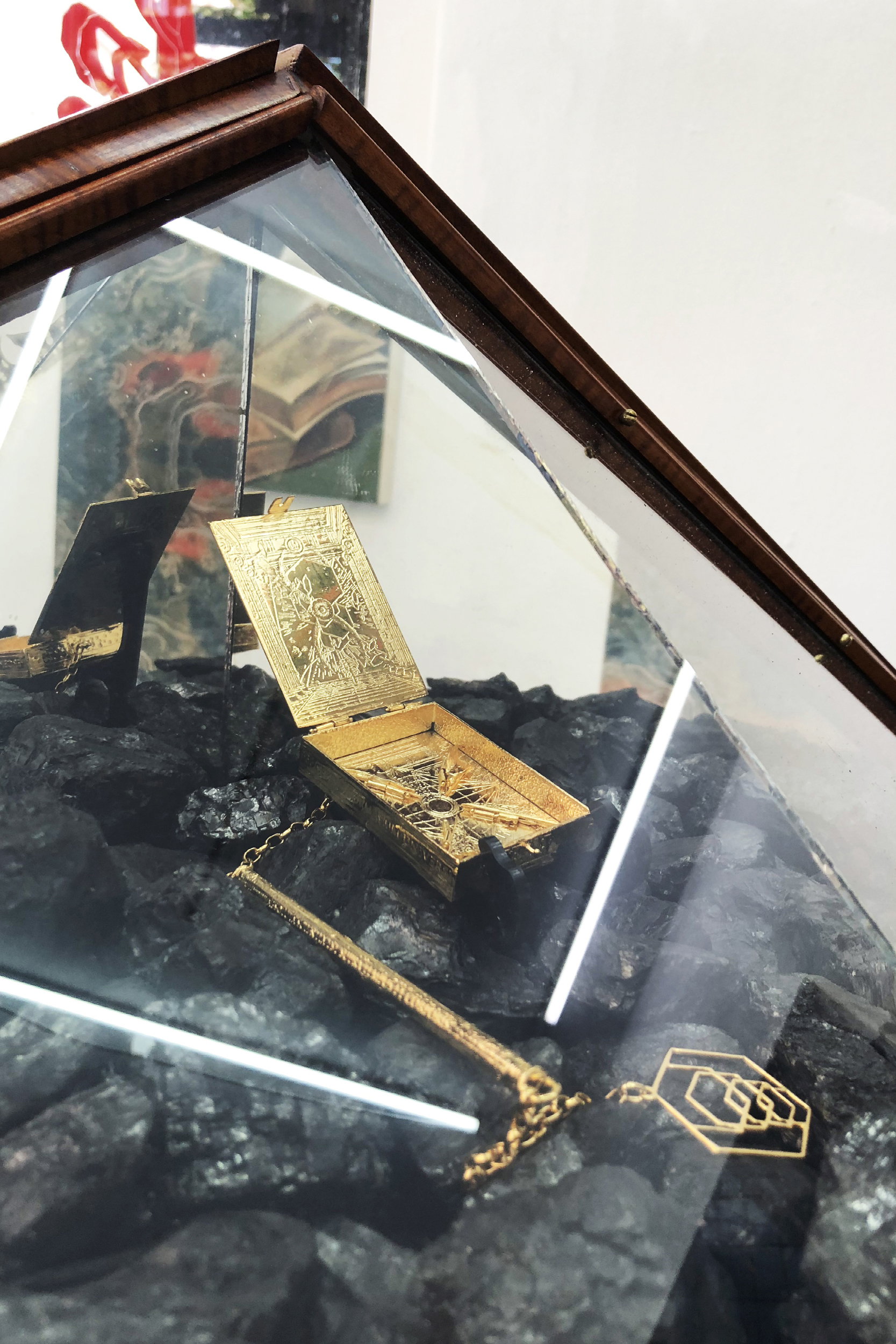
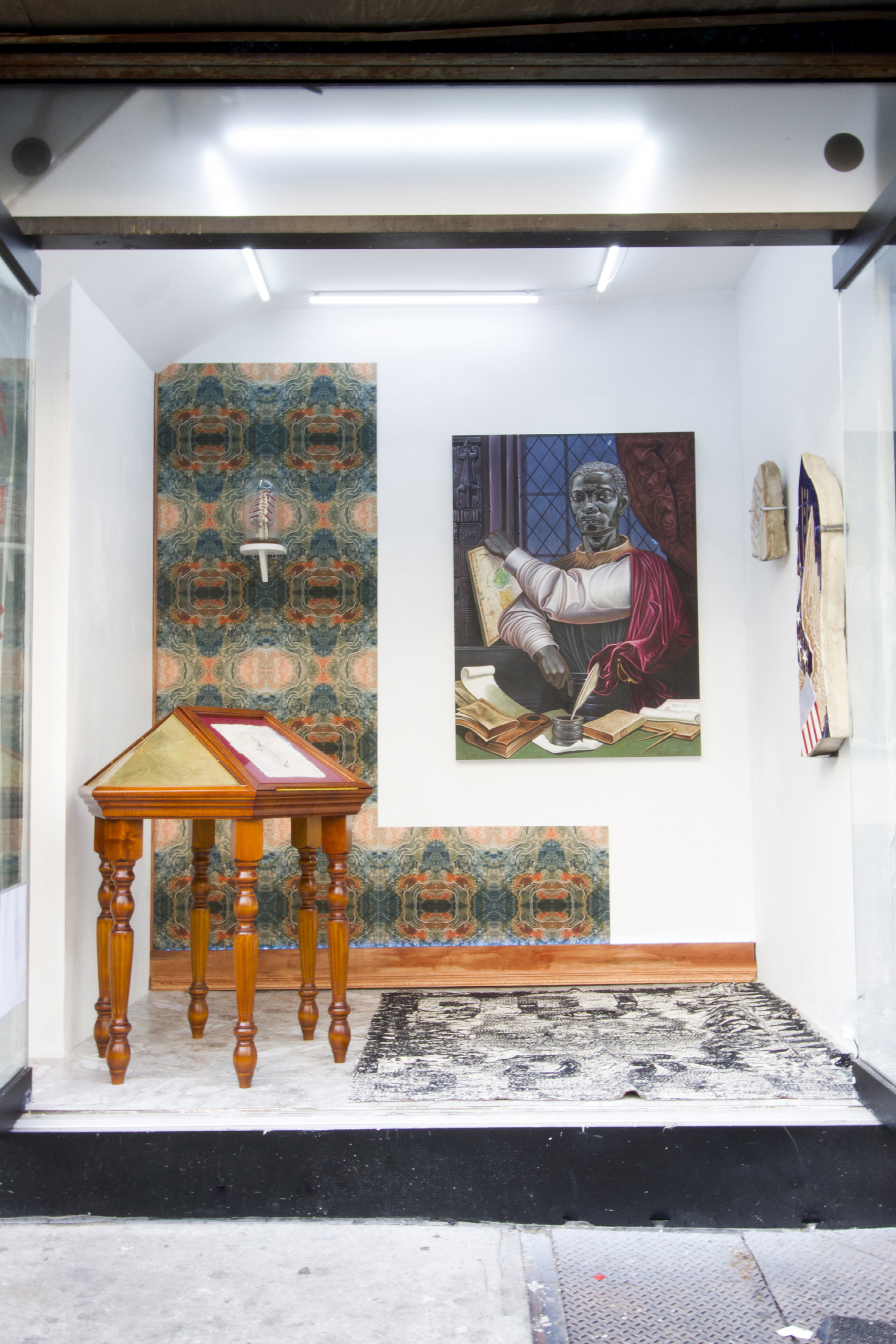
1/2 of the two tables which comprise Primal Quadrant also made a reappearance in September at Super Dutchess gallery on the Lower East Side. Curated by Andrew Woolbright, the piece is shown alongside some excellent work by Kajahl, Joe Bochynski, Marco Tulio Venegas, and Roque Montez. It was nice to revisit this piece, which is now 5 years old. It was reassuring to know that I am as sure today as I was when I first made the piece about the ideas in this piece, and the way they are captured and expressed in the format. Like Phase Realia, it remains a sort of skeleton key, not only to the body of work that Primal Quadrant was a part of, but also a road map to the work which followed, and continues to follow it.
